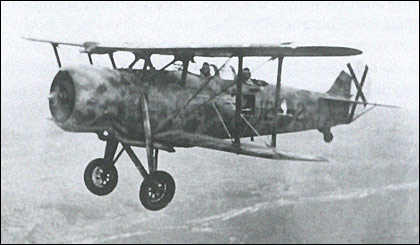 |
Meridionali Ro.371934 |  |
| FIGHTER, RECONNAISSANCE AIRCRAFT | Virtual Aircraft Museum / Italy / Meridionali |
 |
Meridionali, then named Officine Ferroviarie Meridionali, first became involved in the Italian aircraft industry in 1923, beginning manufacturing activities two years later by licence-construction of Fokker designs. Subsequently, after two years under the name Romeo, the title Industrie Meccaniche e Aeronautiche Meridionali (IMAM) was adopted in 1936. In 1934 the company had started design and production of a two-seat fighter/reconnaissance biplane under the designation Romeo Ro.37. This was an unequal-span single-bay biplane of mixed wood and metal construction. Its design included fixed tailwheel landing gear, all three wheels being provided with speed fairings; a braced tail unit incorporating a variable-incidence tailplane; and accommodation for two in tandem enclosed cockpits, Power was provided by a 522kW Fiat A.30RA Vee engine. An improved Ro.37bis was developed subsequently, and this introduced an optional radial powerplant comprising either the Piaggio P. IX or P.X supercharged engine. Both models proved popular for their day, with production of the Ro.37 and Ro.37bis exceeding 160 and 475 respectively, and export orders were received from Afghanistan, Hungary and from countries in Central and South America. Ro.37 and Ro.37bis aircraft were involved in the Spanish Civil War from October 1936 and were used extensively by the Regia Aeronautica during Mussolini's invasion of Abyssinia between October 1935 and May 1936 and during the Italian occupation of that country until 1941. Some 275 Ro.37bis aircraft were in service with the Regia Aeronautica when Italy became involved in World War II, and these saw first-line service in the East and North African campaigns and in the Balkans. After withdrawal from first-line service they found a variety of uses, but all had been retired before Italy's armistice with the Allies on 8 September 1943.
|  All the World's Rotorcraft | |||||||
 |

|
